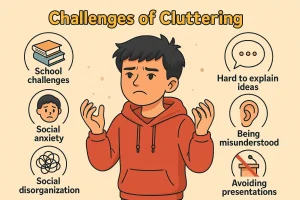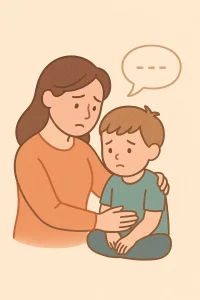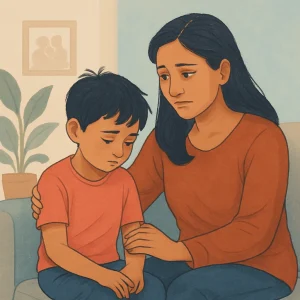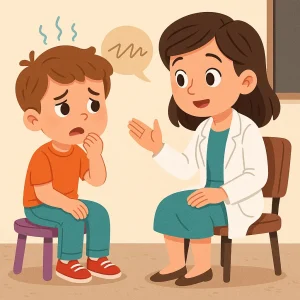How Occupational Therapy Helps Shy Kids Build Confidence
By Wellness Hub
Last Updated: February 3, 2025
Hey there, wonderful parents! Are you noticing that your child tends to be on the shy side? Maybe they feel overwhelmed in social situations or find it hard to join group activities. You’re not alone in these concerns, and it’s completely normal to seek ways to help your child build confidence. This article is here to guide you through how occupational therapy can be a fantastic tool in boosting your shy child’s confidence and helping them thrive in everyday situations.
Occupational therapy for shy kids isn’t just about addressing physical challenges. It’s a holistic approach that supports children in becoming more comfortable and confident in their social interactions. Whether your child struggles with engaging in playgroups, has difficulty expressing emotions, or finds transitions between activities challenging, occupational therapy offers tailored strategies to help them navigate these hurdles.
Understanding Occupational Therapy for Shy Kids
What is Occupational Therapy?
Occupational therapy, often abbreviated as OT, is a type of therapy that helps individuals achieve independence in all facets of their lives. For children, this means assisting them in performing activities (or “occupations”) that are essential for their growth and development, such as playing, learning, and interacting with others. OT is tailored to address the unique challenges each child faces, making it an effective approach for a variety of developmental issues.
Why is Occupational Therapy Important for Shy Children?
Children who are shy often face difficulties that extend beyond simple reluctance to interact with others. They may struggle with social skills, emotional regulation, and even physical tasks that require fine motor skills. These challenges can hinder their ability to participate fully in daily activities and social interactions. This is where occupational therapy shines.
Also read: Online Occupational Therapy for Kids and Adults
Key Benefits of Occupational Therapy for Shy Kids:
- Creating a Supportive Environment:
- OT sessions are designed to provide a safe and supportive space where children can express themselves freely. This environment is crucial for shy kids who might feel anxious or overwhelmed in more demanding social situations.
- Developing Social Skills:
- Occupational therapists use play-based activities to help children build essential social skills. These activities are not only fun but also strategically designed to encourage interaction, cooperation, and communication.
- Improving Emotional Regulation:
- Shy children often experience heightened emotions such as anxiety or frustration. OT helps them learn techniques to manage these emotions, making it easier for them to navigate social settings and everyday challenges.
- Enhancing Fine Motor Skills:
- Many shy children may also struggle with tasks that require fine motor skills, like writing or using utensils. OT provides targeted exercises to improve these skills, boosting the child’s overall confidence and independence.
The Role of Play in Occupational Therapy
Play is a fundamental part of occupational therapy for children. Through play, therapists can observe how a child interacts with their environment and peers. This insight allows them to tailor activities that address specific needs while making the therapy sessions enjoyable and engaging. Play helps children practice social interactions in a controlled setting, making it easier for them to transfer these skills to real-life situations.
By understanding and addressing the underlying causes of shyness, occupational therapy helps children become more confident and capable in their daily lives. If you’re curious about how OT can support your child, consider reaching out to a professional who can provide a personalized evaluation and treatment plan.
How Occupational Therapy Helps Boost Confidence
1. Creating a Safe Space
One of the first things occupational therapy (OT) offers is a safe and accepting environment where your child can feel comfortable and supported. For shy kids, feeling safe is crucial. They need a space where they can express themselves without fear of judgment. OT sessions are designed to be welcoming and non-threatening, which helps children relax and open up.
Imagine your child walking into a room filled with engaging toys, sensory materials, and friendly faces. This environment is carefully crafted to make them feel at ease. When shy kids feel safe, they are more likely to participate in activities, try new things, and gradually build their confidence.
2. Identifying and Addressing Triggers
Shyness can often be linked to certain triggers that cause anxiety or discomfort. Occupational therapists are skilled at identifying these sensory, social, and emotional triggers. Through careful observation and interaction, they pinpoint what makes your child feel uneasy.
Once these triggers are identified, therapists develop personalized strategies to help your child cope. For example, if loud noises make your child anxious, the therapist might introduce calming techniques or gradually expose them to controlled noise levels in a supportive way. By addressing these triggers, OT helps shy kids manage their anxiety and build resilience.
3. Building Social Skills Through Play
Play is a powerful tool in occupational therapy, especially for building social skills in shy children. Play is not just fun; it’s a critical part of how children learn to interact with the world around them. Through play, kids develop essential skills like sharing, taking turns, and communicating.
Occupational therapists incorporate play-based activities to teach these skills in an engaging and enjoyable manner. For instance, a game that requires children to work together can help them practice cooperation and communication. These activities are designed to be progressively challenging, helping kids build confidence step by step.
Common OT Techniques and Their Benefits
| Technique | Description | Benefits |
|---|---|---|
| Role-Playing Games | Simulated social scenarios that allow children to practice interactions in a controlled environment. Examples include pretending to order food at a restaurant or asking a friend to play. | Builds social skills, reduces anxiety by familiarizing children with social situations. |
| Sensory Activities | Activities that engage the child’s senses, such as playing with textured materials (e.g., rice bins), swinging, jumping on trampolines, or using weighted blankets. | Enhances emotional regulation by helping children feel more grounded and calm; improves focus and sensory processing. |
| Fine Motor Exercises | Tasks that require precise hand movements and coordination, such as drawing, building with blocks, or using scissors. | Improves hand-eye coordination, strengthens fine motor skills, and boosts confidence in performing everyday tasks. |
| Interactive Play | Engaging in cooperative games and activities that require teamwork and communication, like building a tower together or playing a board game. | Promotes teamwork, enhances communication skills, and helps children learn to take turns and share. |
| Gross Motor Activities | Exercises that involve large muscle groups, such as climbing, running, or throwing and catching balls. | Develops physical strength and coordination, improves balance and body awareness, and can also reduce hyperactivity. |
| Cognitive Tasks | Activities that challenge thinking skills, such as puzzles, memory games, or problem-solving tasks. | Enhances cognitive development, improves attention span, and boosts problem-solving abilities. |
| Art and Craft Projects | Creative activities like painting, sculpting with clay, or making collages. | Encourages self-expression, enhances creativity, and improves fine motor skills and hand-eye coordination. |
| Social Stories | Narratives or visual aids that depict common social situations and appropriate responses. | Helps children understand social cues and expectations, reduces anxiety about new experiences, and improves social understanding. |
Benefits of Occupational Therapy
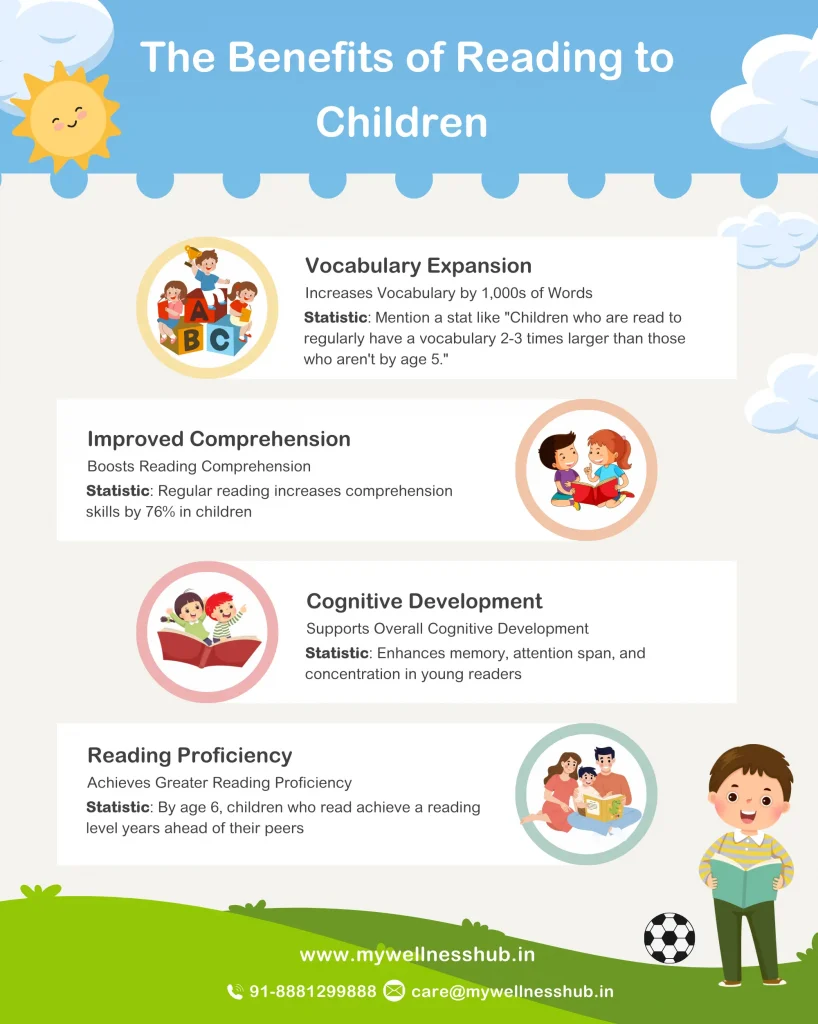
1. Improved Social Interaction
One of the primary benefits of occupational therapy for shy kids is the improvement in social interactions. Shy children often find it challenging to engage with peers, which can impact their social development. Through occupational therapy, children gradually build the confidence to interact with others. Therapists use various play-based activities to encourage social skills like sharing, taking turns, and communicating effectively. Over time, these guided interactions help shy children feel more comfortable and confident in social settings, making it easier for them to make friends and participate in group activities.
2. Enhanced Emotional Regulation
Shy children can experience intense emotions such as anxiety and frustration, which can be difficult for them to manage. Occupational therapy teaches self-soothing techniques and frustration management skills to help children regulate their emotions. Therapists might use activities like deep breathing exercises, sensory tools, or relaxation techniques to help children calm themselves. By learning these skills, children become better equipped to handle stressful situations, reducing the frequency and intensity of emotional outbursts. This enhanced emotional regulation is crucial for their overall well-being and social interactions.
3. Better Adaptation to Changes
Adapting to changes in routine or environment can be particularly challenging for shy children. Occupational therapy helps them become more flexible and resilient when faced with new situations. Therapists introduce gradual changes in a controlled environment, helping children practice and develop coping strategies. For example, they might simulate transitions between activities or introduce new tasks incrementally. This practice helps children become more adaptable, making it easier for them to handle changes at home, school, or in social settings.
Practical Examples of OT in Action
1. Role-Playing Games for Social Interactions
One of the most effective ways occupational therapy helps shy kids is through role-playing games. These activities are designed to simulate real-life social scenarios in a controlled and supportive environment. For instance, an occupational therapist might set up a pretend play situation where your child has to order food at a restaurant or ask a friend to play. Through these role-playing exercises, children practice essential social skills such as greeting others, making eye contact, and responding to different social cues.
Role-playing games are particularly beneficial because they allow children to rehearse social interactions without the pressure of a real-world setting. This practice helps shy kids build confidence gradually. They learn how to handle various social situations, which makes them feel more prepared and less anxious when these situations arise in real life.
2. Sensory Activities to Help Children Feel Grounded and Calm
Sensory activities play a crucial role in helping shy children feel grounded and calm. Many shy kids have heightened sensitivity to sensory inputs, which can make them feel overwhelmed and anxious. Occupational therapists use sensory activities to help children regulate their sensory responses and develop coping strategies.
For example, a therapist might use a sensory bin filled with rice or beans, encouraging the child to explore different textures. Activities like swinging, jumping on a trampoline, or playing with weighted blankets can also help. These sensory experiences help children feel more centered and relaxed, reducing anxiety and improving their ability to focus and engage with others.
3. Combining Techniques for Maximum Benefit
Often, occupational therapists will combine role-playing games with sensory activities to maximize the benefits. For example, a child might engage in a calming sensory activity before participating in a role-playing game. This approach helps the child feel more relaxed and ready to interact, enhancing the effectiveness of the social skills training.
How to Get Started with Occupational Therapy
If you’re considering occupational therapy (OT) for your shy child, taking the first steps can feel overwhelming. But don’t worry, we’re here to guide you through the process. Here’s a simple, step-by-step guide to get started with OT for your child:
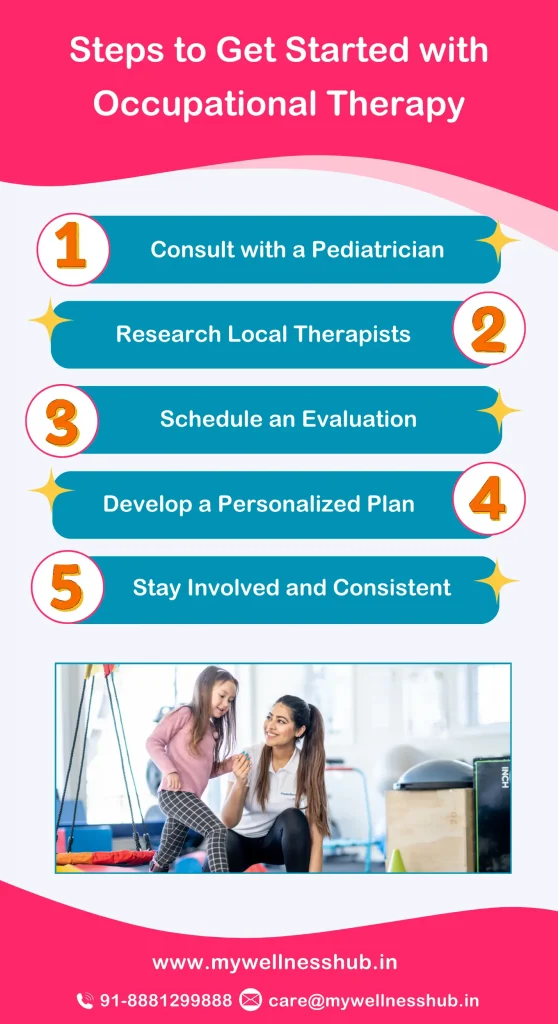
1. Consulting with a Pediatrician
Your child’s pediatrician is a great starting point. They can provide valuable insights into your child’s behavior and development. During your consultation, share your observations about your child’s shyness, social interactions, and any specific challenges they face. The pediatrician can assess whether occupational therapy might be beneficial and refer you to a qualified occupational therapist.
2. Researching Local Occupational Therapists
Once you have a referral or decide to seek OT independently, the next step is to find local occupational therapists. You can start by:
- Searching Online: Look for occupational therapists in your area. You can use search engines or directories to find therapists who specialize in pediatric OT.
- Asking for Recommendations: Talk to other parents, teachers, or your child’s school counselor. They may know reputable therapists who have successfully worked with shy children.
- Visiting Wellness Hub: At Wellness Hub, we offer comprehensive occupational therapy services tailored to your child’s needs. Our experienced therapists are dedicated to helping children build confidence and overcome challenges.
3. Scheduling an Evaluation
Once you’ve identified a potential occupational therapist, schedule an initial evaluation. This session allows the therapist to assess your child’s specific needs and develop a personalized therapy plan. During the evaluation, the therapist will observe your child’s behavior, social interactions, and responses to various activities.
4. Developing a Personalized Therapy Plan
Based on the evaluation, the occupational therapist will create a customized therapy plan. This plan outlines the goals, strategies, and activities designed to help your child build confidence and improve their social skills. Regular therapy sessions will follow, where your child will engage in fun and supportive activities aimed at addressing their unique challenges.
5. Staying Involved and Consistent
Your involvement is crucial to the success of occupational therapy. Stay engaged by:
- Communicating with the Therapist: Regularly discuss your child’s progress and any concerns you might have.
- Practicing at Home: Reinforce the skills and strategies learned in therapy by incorporating them into your daily routines.
- Being Patient and Supportive: Building confidence takes time. Celebrate small victories and provide continuous encouragement to your child.
Steps to Start Occupational Therapy
| Step | Action | Outcome |
|---|---|---|
| 1. Consult with Pediatrician | Discuss your concerns about your child’s shyness and social interactions. Request a referral for occupational therapy. | Determine if OT is needed and get a professional recommendation. |
| 2. Research Local Therapists | Search for qualified occupational therapists in your area. Ask for recommendations from other parents, teachers, or your pediatrician. | Find the best fit for your child’s specific needs and personality. |
| 3. Schedule an Evaluation | Contact the chosen occupational therapist and book an initial assessment session. This session will evaluate your child’s needs and challenges. | Develop a personalized therapy plan tailored to your child’s unique requirements. |
| 4. Develop a Plan | Collaborate with the occupational therapist to set specific goals and outline the activities and strategies to be used in therapy sessions. | Create a tailored approach to address your child’s needs and ensure targeted interventions. |
| 5. Stay Involved | Regularly practice the skills and techniques learned in therapy at home. Maintain open communication with the therapist about your child’s progress. | Achieve consistent progress and reinforcement of skills, leading to improved confidence and social abilities in your child. |
Incorporating Wellness Hub
At Wellness Hub, we understand that every child is unique and deserves personalized care to help them thrive. Our comprehensive services are designed to support children in building confidence, improving social skills, and managing their emotions effectively.
Services Offered by Wellness Hub:
- Occupational Therapy:
- Our experienced occupational therapists specialize in working with shy children, helping them engage in social interactions and develop essential skills. Through tailored activities and a supportive environment, we ensure each child receives the attention and care they need.
- Speech and Language Therapy:
- Communication is key to confidence. Our speech therapists work with children to improve their language skills, helping them express themselves clearly and confidently in various social situations.
- Counseling Services:
- Emotional support is crucial for shy children. Our counselors provide a safe space for children to explore their feelings, learn self-soothing techniques, and manage anxiety and frustration.
- Educational Support:
- We offer tutoring and learning support to help children overcome academic challenges and build confidence in their abilities.
Conclusion
Summary of How OT Can Boost Confidence in Shy Kids
Occupational therapy (OT) helps shy children build confidence and thrive in social settings. It provides a safe and supportive environment where children feel comfortable. Therapists identify and address sensory, social, and emotional triggers, creating personalized strategies to help children cope. Through fun activities like role-playing games and sensory exercises, OT helps kids develop social skills, manage their emotions better, and adapt to changes in their routine.
Encouragement for Parents to Explore OT as a Valuable Resource
If you’re a parent of a shy child, consider occupational therapy as a valuable resource. It can significantly boost your child’s confidence and social skills. At Wellness Hub, our experienced therapists are dedicated to helping children reach their full potential. Visit our occupational therapy page to learn more about how we can support your child. Remember, every child deserves the chance to shine, and OT can be the key to unlocking your child’s potential.
Frequently Asked Questions:
1. What is occupational therapy for shy kids?
Occupational therapy (OT) for shy kids helps them build confidence and develop social skills through personalized activities and supportive environments. Therapists address sensory, social, and emotional triggers to help children feel more comfortable and engaged in social settings.
2. How can occupational therapy improve my shy child’s social skills?
Occupational therapy improves social skills by using role-playing games and interactive activities that encourage children to interact with peers. These activities help shy kids practice social interactions in a safe and controlled environment, gradually building their confidence.
3. What are the benefits of occupational therapy for shy children?
The benefits of occupational therapy for shy children include improved social interaction, enhanced emotional regulation, and better adaptation to changes. OT helps children develop essential skills to manage anxiety, communicate effectively, and feel more comfortable in various settings.
4. How do I know if my child needs occupational therapy?
If your child struggles with social interactions, has difficulty managing emotions, or feels overwhelmed by changes, they might benefit from occupational therapy. Consulting with a pediatrician or an occupational therapist can help determine if OT is the right choice for your child.
5. What should I expect during an occupational therapy session?
During an occupational therapy session, your child will engage in fun and therapeutic activities designed to address their specific needs. Therapists use play-based methods to improve social skills, emotional regulation, and sensory processing. Each session is tailored to help your child feel comfortable and supported.
6. How long does it take to see results from occupational therapy?
The time it takes to see results from occupational therapy varies for each child. Consistency and practice are key. Some children may show improvement within a few weeks, while others might take longer. Regular sessions and reinforcement of skills at home can help achieve the best outcomes.
7. How can I support my child’s progress in occupational therapy at home?
Supporting your child’s progress in occupational therapy at home involves practicing the skills and techniques learned during sessions. Engage in activities that reinforce social skills, emotional regulation, and sensory processing. Maintain open communication with your child’s therapist for additional guidance and tips.
8. Is occupational therapy fun for children?
Yes, occupational therapy is designed to be engaging and enjoyable for children. Therapists use play-based activities and games to make the sessions fun while addressing developmental goals. This approach helps children feel more motivated and willing to participate.
9. How do I find a qualified occupational therapist for my child?
To find a qualified occupational therapist, start by consulting with your child’s pediatrician for recommendations. You can also search online for local therapists, ask for referrals from other parents or teachers, and visit Wellness Hub to explore our occupational therapy services.
10. Why choose Wellness Hub for occupational therapy?
Wellness Hub offers comprehensive and personalized occupational therapy services designed to help shy children build confidence and thrive. Our experienced therapists provide tailored care in a supportive environment, ensuring each child receives the attention and guidance they need to succeed.
About the Author:
Prapoorna Mangalampalli
M.Sc., M.A., (Dual Masters in Psychology & English) – Counselor (6+ years of experience)
Prapoorna is a skilled counselor with dual Master’s degrees in Psychology and English. With more than six years of professional experience, she specializes in providing various types of counseling, including online Therapy , Marital , Relationship, child, family, and career counseling. Prapoorna is part of the Wellness Hub team, where she contributes significantly to their mission. She values a team-based approach and is committed to innovation, compassion, and the success of her clients. Her diverse educational background and extensive experience enable her to offer insightful and effective counseling services that positively impact individuals and families.
Book your Free Consultation Today
Parent/Caregiver Info:
Client’s Details:
* Error Message




